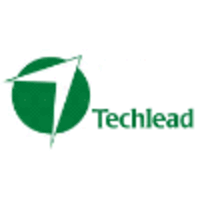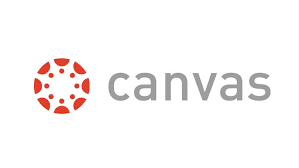Top Education Softwares
Education software revolutionizes learning by integrating technology with educational practices. It offers a diverse range of tools and platforms designed to enhance teaching and learning experiences. This software caters to various educational needs, from managing classroom activities to facilitating distance learning. With features like interactive lessons, assessments, and analytics, it support... Read More
353 companies found
Product Description
BYJU’S is a highly regarded educational platform designed to make learning engaging and effective for students of all ages. It offers a variety of online courses and interactive learning materials that cover a wide range of subjects, from mathematics and science to history and languages. By using a blend of visual and auditory resources, BYJU'S makes complex topics easier to understand. The platf... Read More
Users
- • No Data
Industries
- • No Data
Market Segment
- • No Data
PowerSchool
Product Description
PowerSchool is an intuitive software designed to simplify and enhance the management of educational institutions. Created for K-12 schools, it helps administrators, teachers, students, and parents stay connected and informed. PowerSchool's goal is to make everyday tasks easier, so educators can focus more on teaching and less on paperwork. At its core, PowerSchool is a student information system ... Read More
Users
- • No Data
Industries
- • No Data
Market Segment
- • No Data
Product Description
Grammarly is a widely-used software designed to help improve the quality of your writing. Whether you're drafting an email, working on a report, or posting on social media, Grammarly's tools can assist in enhancing clarity, correctness, and overall impact of your text. At its core, Grammarly checks your writing for grammar and spelling errors, but it goes way beyond basic proofreading. It identif... Read More
Users
- • No Data
Industries
- • No Data
Market Segment
- • No Data
Product Description
Jenzabar is a leading software solution designed specifically for higher education institutions to improve their efficiency and effectiveness. With its user-friendly interface, Jenzabar helps colleges and universities manage everything from admissions and student records to finances and alumni relations. One of the main features of Jenzabar is its ability to streamline administrative tasks. By co... Read More
Users
- • No Data
Industries
- • No Data
Market Segment
- • No Data
Product Description
Vedantu is an online education platform designed to make learning more accessible and engaging for students of all ages. It connects students with top-notch teachers through live, interactive sessions that can take place right from the comfort of home. The platform offers courses across different subjects and grades, making it a versatile tool for supplementary education or even core learning. Wh... Read More
Users
- • No Data
Industries
- • No Data
Market Segment
- • No Data
Product Description
OurSchool is designed with educators, administrators, and students in mind to make the school management process seamless and efficient. Imagine having all the essential tools you need to run a school in one easy-to-use platform. That’s what OurSchool offers. We understand that running a school involves juggling a multitude of tasks – from tracking student attendance and grades to managing schedu... Read More
Users
- • No Data
Industries
- • No Data
Market Segment
- • No Data
Product Description
CPW software is designed to streamline and simplify the tasks you need to get done in your business. Whether you’re managing projects, serving customers, or handling your finances, CPW offers user-friendly tools to help you work more efficiently and effectively. Think of CPW as your go-to partner for everyday business activities. You don't need to be tech-savvy to use it; it's built with simplici... Read More
Users
- • No Data
Industries
- • No Data
Market Segment
- • No Data
Meritnation
Product Description
Meritnation is an online learning platform designed to make education more accessible and engaging for students. It serves as a comprehensive one-stop solution for K-12 students offering a range of study materials, interactive lessons, and tailored resources to help them excel academically. At the heart of Meritnation is its vast repository of learning content that covers a wide array of subjects... Read More
Users
- • No Data
Industries
- • No Data
Market Segment
- • No Data
Canvas LMS
Product Description
Canvas LMS is a user-friendly learning management system designed to make both teaching and learning easier. It offers a variety of tools to help educators create and manage course content, track student progress, and facilitate communication. Whether you’re a small school, a large university, or a business looking to provide training for employees, Canvas LMS provides a flexible platform that ada... Read More
Users
- • No Data
Industries
- • No Data
Market Segment
- • No Data
campuslogic
Product Description
CampusLogic is a software company dedicated to making the financial side of college easier for students and families. The company offers a suite of cloud-based tools designed to streamline the often complex processes of financial aid and scholarships. By doing so, they aim to reduce student loan debt and help more students achieve their educational goals. What makes CampusLogic stand out is its f... Read More
Users
- • No Data
Industries
- • No Data
Market Segment
- • No Data
What are the main benefits of using Education software in schools?
Personalized Learning
Education software facilitates personalized learning experiences, allowing students to move at their own pace. Educators can tailor the content to match students' unique learning needs, ensuring a more effective education process. This adaptability helps in accommodating different learning styles, making learning more inclusive.
Enhanced Engagement
With interactive elements like quizzes, games, and multimedia content, Education software can significantly boost student engagement. The use of interactive media makes learning not just educational but enjoyable, holding students' attention longer and encouraging active participation in lessons.
Efficient Assessment and Feedback
Education software streamlines assessment and feedback processes, providing instant results and insights into students' performance. Teachers can quickly identify areas where students struggle and provide timely, targeted support. This efficiency enhances learning outcomes as students receive immediate guidance to improve.
Resource Accessibility
Digital platforms expand access to a wealth of educational resources. Education software provides students and teachers with a wide array of learning materials such as e-books, online lectures, and tutorials. This accessibility ensures that learners can access high-quality content anytime and anywhere, breaking down geographical and economic barriers to education.
Administrative Efficiency
Education software also aids in administrative tasks, reducing the paperwork burden on educators. Tools for grading, attendance tracking, and scheduling streamline these processes, allowing teachers to focus more on instruction. Efficiencies gained through automation help schools operate more effectively.
Collaborative Learning
Education software encourages collaboration among students through features like discussion boards and group projects. These platforms enable students to work together, share insights, and develop teamwork skills. Collaboration tools foster a sense of community and support peer learning, enhancing the educational experience.
Data-Driven Insights
The use of Education software offers schools valuable data-driven insights. Analytics tools embedded within these platforms allow educators and administrators to track progress, identify trends, and make informed decisions. This data-centric approach leads to more effective teaching strategies and improved student outcomes.
Accessibility and Inclusion
Incorporating Education software in schools enhances accessibility and inclusion by supporting students with disabilities. Features such as text-to-speech, adjustable text size, and alternative input methods ensure that all students can participate fully in their education. The inclusive design of these platforms promotes equality in learning environments.
Cost-Effectiveness
While the initial investment in Education software may be significant, it often results in cost savings over time. By reducing the need for physical materials, such as textbooks and paper, schools can allocate resources more efficiently. Additionally, digital learning platforms often require less maintenance than traditional tools, further lowering operational costs.
Up-to-Date Content
Education software ensures that students and teachers have access to the most current information. Unlike traditional textbooks, which can quickly become outdated, digital content is easily updated to reflect the latest developments and research. This ensures learners receive a relevant and modern education.
Education software plays a critical role in enhancing the educational landscape. By leveraging technology, schools can create a more dynamic, efficient, and inclusive learning environment, ultimately improving educational outcomes for students. Through these benefits, education software supports the modern educational mission to provide quality, accessible learning opportunities for all.
How does Education software enhance student learning experiences?
Individualized Learning
Education software enables personalized learning experiences tailored to individual student needs. By using algorithms and data analysis, it identifies strengths and weaknesses, providing custom content and exercises to address specific learning gaps. This approach promotes a more profound understanding by adapting to a student’s pace and learning style.
Interactive Content
Leveraging multimedia, education software transforms traditional lessons into dynamic, interactive experiences. It integrates videos, animations, and simulations, making difficult concepts more accessible. This engagement captivates students, fostering a more attentive and motivated learning environment.
Accessibility and Flexibility
Education software offers unparalleled flexibility, allowing students to learn at any time, from any place. This flexibility is especially beneficial for those with differing schedules or commitments outside the classroom. Students can review lessons, submit assignments, and even take exams from locations that suit them. Thus, they maintain a consistent educational experience without geographical constraints.
Immediate Feedback
Instant feedback is a critical feature of education software that enhances student learning experiences. Students receive real-time responses to quizzes and exercises, enabling them to understand their progress and swiftly address mistakes. This feedback loop supports continuous improvement and helps reinforce memory retention.
Collaboration Opportunities
By breaking down geographical barriers, education software opens new avenues for collaboration among students. Features like discussion forums, collaborative documents, and virtual meetings foster a sense of community and teamwork. This environment encourages students to engage with their peers, enhancing communication skills and broadening perspectives.
Skill Development
Education software is instrumental in developing crucial 21st-century skills such as critical thinking, problem-solving, and digital literacy. It often includes gamification elements and challenging scenarios that encourage students to think outside conventional frameworks. Students learn to apply their knowledge creatively, preparing them for future academic and professional pursuits.
Resource Availability
Vast repositories of knowledge are available through education software platforms, offering resources like e-books, journals, video lectures, and more. Students gain access to a wealth of information, enabling exhaustive research and exploration beyond textbook constraints. This abundance broadens their understanding and supports a comprehensive learning journey.
Teacher Support
Education software streamlines administrative tasks, allowing educators to devote more time to instruction and student engagement. Automation in grading, attendance, and assessments reduces the workload, enabling teachers to focus on developing innovative teaching strategies. It supports teachers in delivering lessons that cater to diverse learning preferences, thereby enhancing student outcomes.
Future-proof Learning
As technology evolves, education software continues to advance, integrating emerging tools and methodologies. This adaptability ensures that students and teachers are always at the forefront of educational innovation. Embracing new technologies not only prepares students for the future but also keeps the learning environment fresh and engaging.
Motivational Engagement
By incorporating gaming principles, education software increases student motivation through rewards and goal-setting. Gamified lessons and milestone achievements encourage students to persist through challenging topics, transforming learning into an enjoyable and rewarding process. This motivation fosters a deeper commitment to education, essential for long-term academic success.
What features should you look for in quality Education software?
When selecting Education software, certain features are essential for ensuring it meets the needs of educators, students, and institutions. Quality Education software should provide a comprehensive range of functionalities that enhance learning experiences, streamline administrative tasks, and promote engagement. Here are some critical features to consider:
User-friendly Interface
An intuitive and easy-to-navigate interface is crucial for Education software. Both teachers and students should be able to access and operate the software without extensive training. The layout should be clear, and important functions must be readily accessible.
Personalized Learning Paths
Education software should offer personalized learning options to cater to diverse student needs and learning styles. Features like adaptive learning paths and customizable content help tailor the educational experience, ensuring that each learner can progress at their own pace.
Interactive Content
Incorporating multimedia elements such as videos, quizzes, and games increases student engagement. Interactive content makes learning more dynamic and helps reinforce concepts. The ability to create and share multimedia resources is an added advantage.
Assessment and Feedback Tools
Robust assessment capabilities are vital for Education software. It should provide various assessment formats, such as quizzes and assignments. Automated grading systems and detailed feedback mechanisms assist educators in monitoring student progress and understanding where additional support may be needed.
Collaborative Features
Facilitating collaboration among students and between teachers and students enhances the learning process. Features such as discussion forums, group work modules, and real-time chat can foster a collaborative environment, encouraging communication and teamwork.
Accessibility and Mobile Compatibility
Quality Education software must be accessible to all users, including those with disabilities. Compliance with accessibility standards and compatibility with various devices, including smartphones and tablets, ensures that learning can take place anytime and anywhere.
Integration Capabilities
The ability to integrate with other tools and platforms is essential. Education software should work seamlessly with existing school systems, such as Learning Management Systems (LMS), Student Information Systems (SIS), and other productivity tools, to streamline operations and enhance functionality.
Data Security and Privacy
Protecting student data is of utmost importance. The software should comply with data protection regulations and offer features like secure logins and encrypted data storage. Privacy controls allow educators and institutions to manage who can access specific information.
Analytics and Reporting
Comprehensive analytics and reporting features enable educators to track student performance and identify trends. Data-driven insights help in making informed decisions, tailoring instruction methods, and improving overall educational outcomes.
Support and Training Resources
Reliable customer support and ample training resources are necessary for effective implementation and usage of Education software. User manuals, live support, and online tutorials can significantly contribute to a smooth transition and continuous usage.
Cost-effectiveness
While not a feature per se, considering the cost-effectiveness of Education software is essential. Evaluating pricing models, such as subscription fees and license costs, against the features offered can aid in selecting software that provides value for money.
Incorporating these features into your Education software selection criteria ensures a comprehensive, efficient, and engaging learning environment.
How can Education software be integrated into classroom teaching?
Enhancing Interaction and Engagement
Education software can significantly increase interaction and engagement in the classroom. By providing interactive elements like quizzes, simulations, and games, it allows students to engage with the material actively. This approach helps maintain students' interest. Such tools often use multimedia elements including videos and animations, which tend to capture students' attention more effectively than traditional lectures.
Personalized Learning Experience
One of the key benefits of Education software is the ability to offer personalized learning experiences. It allows teachers to tailor lessons to cater to individual students' needs. Features such as adaptive learning algorithms can track students' performance and adjust the content's difficulty accordingly. This customization aids in addressing the unique learning pace of each student, ensuring no one is left behind.
Real-Time Feedback and Assessment
Education software can deliver real-time feedback and assessment, which is crucial for effective learning. Teachers can use these tools to quickly evaluate student understanding and identify areas needing improvement. Immediate feedback helps students learn from their mistakes without delay, reinforcing the material taught. This timely assessment process supports both teachers' and students' efforts in achieving optimal learning outcomes.
Facilitating Collaboration and Communication
Education software supports classroom collaboration and communication. Many platforms offer collaborative features such as shared documents, discussion forums, and group projects. These tools encourage students to work together, fostering teamwork and communication skills. Teachers can also use these platforms to communicate assignments, announcements, and feedback, keeping everyone informed.
Resource Accessibility and Flexibility
Cloud-based Education software can make resources more accessible and flexible for both teachers and students. Digital textbooks, lecture notes, and supplementary materials can be accessed anytime and anywhere, promoting a more flexible learning environment. This accessibility is especially beneficial for students who need to review materials outside of school hours or from remote locations.
Efficient Classroom Management
Education software can streamline classroom management tasks. It can automate administrative duties like taking attendance, grading, and scheduling, allowing teachers to focus more on teaching. Tools for managing assignments and tracking student progress can enhance organizational efficiency, making classrooms run smoothly and effectively.
Facilitating Flipped Classroom Models
Education software is essential for implementing flipped classroom models. Teachers can upload lectures and materials online for students to review before class. This approach allows classroom time to be used for discussions, problem-solving, and hands-on activities. By doing so, it enhances understanding and retention of the material presented.
Through various methods of integration, Education software proves to be a versatile tool that can transform traditional teaching approaches. By focusing on interaction, personalization, feedback, collaboration, accessibility, management, and innovative models, it significantly enriches the educational experience.
What types of Education software are available for remote learning?
Learning Management Systems (LMS)
Learning Management Systems enable educators to deliver content and resources, track student progress, and manage course administration remotely. These platforms often support uploading course materials, assessing student performance, and providing feedback. LMS platforms are versatile, suitable for both synchronous and asynchronous learning environments.
Virtual Classrooms
Virtual classrooms simulate a traditional classroom setting in an online environment. These tools support live video conferencing, enabling instructors and students to interact in real time. Features often include chat functions, screen sharing, and collaborative whiteboards. Virtual classrooms are essential for maintaining direct communication and engagement in remote learning settings.
Content Management Systems (CMS)
Content Management Systems in Education software allow educators to create, store, and organize educational content efficiently. These tools facilitate the management of multimedia resources, ensuring both teachers and students have access to organized educational materials. A CMS is beneficial for structuring course content in a way that enhances learning experiences.
Assessment and Evaluation Tools
Assessment tools are crucial in Education software, particularly for remote learning. These tools facilitate the creation and administration of tests, quizzes, and exams. They enable educators to evaluate student competencies and learning progress. Automated grading features often accompany assessment tools, providing quicker feedback and reducing the administrative burden on educators.
Collaborative Tools
Collaborative tools support group work and peer interaction, an essential component of effective remote learning. These include forums, discussion boards, and collaborative document editing software. Such tools promote student engagement and idea exchange, helping to recreate the collaborative atmosphere of a physical classroom.
Video Creation and Editing Software
Video creation and editing tools are a valuable part of Education software for educators creating instructional videos and presentations. These tools enable teachers to produce engaging visual content that can enhance student understanding. Videos created using these tools can be shared through various platforms, providing flexible learning resources for students.
Simulation Software
Simulation software within the realm of Education software provides virtual environments where students can explore scenarios that would be impractical or impossible in real life. This can include simulations for subjects like science experiments, historical events, or medical training. Such tools offer experiential learning opportunities, enhancing students' understanding of complex concepts through interactive learning.
Gamification Software
Gamification software incorporates game-design elements into learning processes. It can involve point scoring, competitive elements, and rules of play to engage students. By integrating gamification into Education software, educators can boost student motivation and increase participation, creating a dynamic and interactive remote learning environment.
e-Book and Digital Resources
e-Book and digital resource platforms provide access to a wide range of educational materials in electronic format. This type of Education software allows students to access textbooks, research papers, and other learning resources from any location. Digital resources offer the flexibility required for remote learning, supporting both independent study and instructor-led teaching.
Scheduling and Planning Tools
Scheduling and planning tools in Education software help manage time and organize coursework for both students and educators. These tools include features such as calendar integration, deadline reminders, and task management. They are essential for maintaining structure and ensuring timely progression through course material in a remote learning environment.
How does Education software support teacher productivity?
Education software enhances teacher productivity by streamlining various aspects of the educational process. Here are some ways it achieves this:
Automation of Administrative Tasks
Education software automates repetitive administrative tasks such as grading, attendance tracking, and scheduling. This eliminates the need for teachers to spend hours on paperwork, allowing them to focus more on teaching and interacting with students. For instance, automated grading systems can instantly evaluate student submissions, providing immediate feedback and freeing up valuable time for teachers.
Resource Management
Teachers often spend considerable time creating and organizing educational resources. Education software provides centralized platforms for resource management, enabling teachers to store, share, and access educational materials efficiently. This reduces the time spent on resource preparation and allows teachers to quickly find the materials they need for their lessons.
Enhanced Communication
Effective communication is crucial for teacher productivity. Education software facilitates improved communication channels between teachers, students, and parents. Through messaging systems and discussion forums, educators can easily interact with students and parents, reducing the time and effort required for face-to-face meetings. This ensures that communication is always open and accessible, even outside of school hours.
Personalized Learning
Education software supports personalized learning experiences tailored to individual student needs. With data analytics and progress tracking features, teachers can identify student strengths and weaknesses. This allows educators to adapt their teaching strategies, focusing their efforts where they are needed most and optimizing the learning experience for each student. As a result, teachers can achieve better educational outcomes in less time.
Curriculum Planning
Developing effective lesson plans is time-consuming. Education software simplifies curriculum planning by offering templates, sample plans, and collaborative tools. Teachers can draw from an extensive repository of resources to design lessons that align with educational standards and objectives. Collaborative tools also allow teachers to share and refine lesson plans, promoting a more efficient planning process.
Access to Professional Development
Continuous professional development is essential for educators. Education software provides access to workshops, webinars, and courses, enabling teachers to enhance their skills without leaving their classrooms. This ensures that teachers remain updated on the latest teaching methodologies and technologies, improving their effectiveness and efficiency in the classroom.
Data-driven Insights
Education software provides teachers with actionable insights through data analytics. By analyzing student performance metrics, teachers can make informed decisions and adjust teaching methods as needed. These insights help educators identify patterns and trends, allowing them to optimize their teaching strategies for better student engagement and achievement.
In summary, Education software significantly bolsters teacher productivity by automating tasks, improving resource management, enhancing communication, supporting personalized learning, streamlining curriculum planning, facilitating professional development, and providing data-driven insights. Each of these components helps teachers to be more effective in their roles, ultimately benefiting students in the learning environment.
What are the challenges of implementing Education software in schools?
Integration with Existing Systems
One of the main challenges of implementing Education software in schools is integrating it with existing systems. Schools often have established platforms and databases for managing student information, grades, and other administrative tasks. Aligning new Education software with these systems can be complex, requiring significant time and resources.
Budget Constraints
Budget constraints are a significant hurdle. Many educational institutions operate with limited financial resources. Investing in new Education software entails not just the purchase cost, but also expenses related to installation, training, and ongoing maintenance. Schools need to justify these costs while negotiating tight budgets, which can hinder implementation.
Teacher Training and Resistance
Teachers must be adequately trained to use Education software effectively. This training requires time and resources that some schools may lack. In addition, teachers might resist new technologies, especially if they are comfortable with traditional teaching methods. Overcoming this resistance is crucial for successful implementation.
Technical Support and Infrastructure
Access to reliable technical support and proper infrastructure is critical. Schools may face challenges such as inadequate internet connectivity, insufficient hardware, or lack of IT personnel to troubleshoot issues. These technical limitations can impair the effectiveness of Education software, hampering its intended benefits.
Customization Needs
Educational institutions vary greatly in size, goals, and requirements. One common challenge is customizing Education software to fit these diverse needs. Off-the-shelf solutions may not align perfectly with a school's specific curriculum or teaching environment, necessitating customization that can be costly and time-consuming.
Privacy and Security Concerns
Education software often requires handling sensitive student data. Implementing robust data privacy and security measures is imperative. Schools face challenges in ensuring that Education software complies with data protection regulations and safeguarding against potential breaches or unauthorized access.
User Engagement
Engaging students and teachers effectively is crucial for the success of Education software. Users must not only adopt the software but also utilize its features to their full potential. Motivating users and maintaining consistent engagement can be challenging, especially if the software is seen as cumbersome or non-intuitive.
Evaluation of Effectiveness
Assessing the impact and effectiveness of Education software poses another challenge. Schools must establish metrics to evaluate whether the software meets educational objectives and enhances learning outcomes. This evaluation process can be challenging, requiring both qualitative and quantitative analysis.
Keeping Up with Rapid Technological Advancements
The fast-paced nature of technological advancements presents a continual challenge. Schools must regularly update Education software to keep up with the latest developments, ensuring that both the software and the teaching methods remain relevant. This ongoing need for updates demands additional resources and planning.
Compatibility Issues
Education software must be compatible with a variety of devices used in schools, from desktops to tablets and smartphones. Ensuring consistent performance across different platforms and devices can be a significant technical challenge, often requiring specialized solutions.









